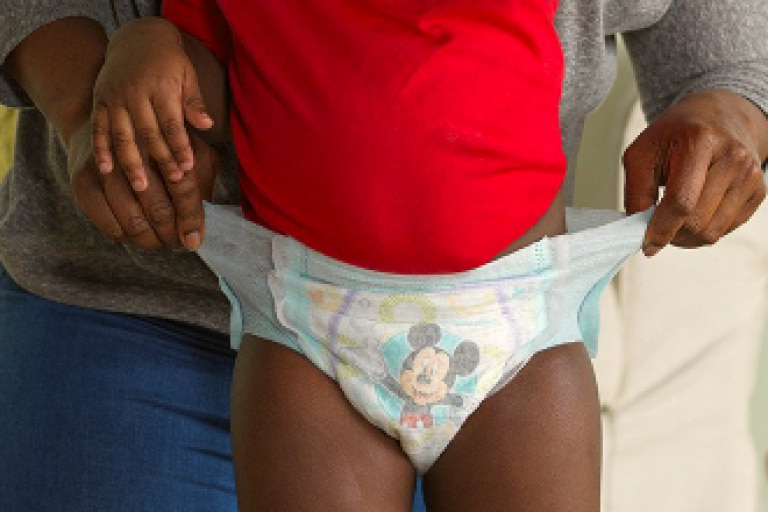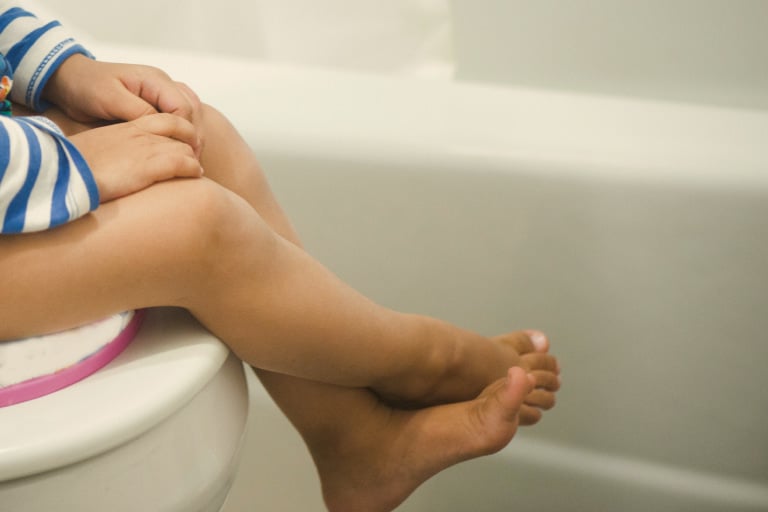Aprendizaje para ir al baño
How to know when it’s time to transition from diapers to training pants

Setting realistic goals and expectations for the process of transitioning from diapers to Pull-Ups can help you avoid frustration. With the right preparation, making the transition can be a time of growth and bonding. Consider this your primer!
Potty Training Readiness
Just like with many things your child will learn over the years—from reading and writing to riding a bike—it can be important to wait until they are ready and willing before trying to teach them something new. This principle is often true with potty training. So how do you know if your child is ready to start potty training? Here are six signs of potty training readiness to look for:- Pulling at a wet or dirty diaper
- Hiding to pee or poop
- Interest in others’ use of the potty or copying their behavior
- Having a dry diaper for a longer-than-usual time
- Awakening dry from a nap
- Telling you that they’re about to go, are going, or have just gone in their diaper
Make a plan
Potty training shouldn’t be a one-size-fits-all approach. For instance, if you’re at home and have a ton of time each day with your toddler, you might take a different approach than if you work outside the house and your little one is in a daycare class with other children. This helpful quiz can help you determine the best course of action to get started. Once you know your child’s personality, you can determine how to kick off the potty training journey and which rewards, teaching style and praise that will work best for your unique child. You might also talk with your pediatrician for their observations and tips for success.Gear
One of the most important tools you’ll need to start potty training your child are Pull-Ups training pants, which are specially designed to teach potty training skills with the protection toddlers need. The line of products has Pull-Ups tailored to the needs of little boys and little girls, as well as training pants especially for nighttime. Stay stocked up on Huggies wipes, since your child will be used to being cleaned with moist wipes (rather than regular toilet paper). That will help smooth the transition. You’ll also want to invest in a good training toilet that’s sized for your little one. After all, an adult-sized toilet can seem huge to your toddler! A toddler-sized toilet such as the Summer My Size Potty looks like a “regular” toilet and includes a compartment to hold books and wipes, has a simulated flushing sound so your little one can get used to it and a removable basin for easy cleaning. You may also want to invest in a portable travel seat that can convert standard-sized restroom toilets into something more manageable for your little one while you’re out and about. It’s also a good idea to think ahead for some games or rewards to help keep your child motivated during the training. These might include a chart with stickers documenting their progress, some small food treats (like candies) or toys they only have access to when they’ve used the potty. Pull-Ups offers a ton of resources for incentives, printable charts, and game ideas.Hygiene
When your little one starts using the toilet, it’s important to instill good hygiene habits, from wiping to hand washing. Gaining independence in the bathroom is a big part of being a “big kid”! You want to teach your child to wipe from front to back to avoid bacteria transfer. Good wiping habits help eliminate issues that can lead to urinary tract infections and will make sure little bottoms are clean. As your child learns to count, you might talk about how many squares of toilet paper are usually needed for a “#1” or a “#2,” and have them look at the toilet paper after each wipe to see if it’s clean. A good rule of thumb is to keep wiping until the toilet paper appears clean. Hand washing is an important last step to each bathroom experience. Make sure you have everything your child needs to access the sink, including a step stool to reach the faucet, soap and a towel. You might even make it a game, such as singing a favorite tune (like Happy Birthday or The Wheels On the Bus) while they lather their hands. After each successful bathroom trip, make sure to tell your kiddo how proud you are!Expectations
It’s important to think of potty training as a marathon, not a sprint. In fact, research conducted by the Medical College of Wisconsin shows that it takes eight months on average to potty train a child. Every child is different, and some children take longer than others. Be patient and know that positive reinforcement and patience will go a long way.
Looking for more ideas to set your child up for potty training success?
We’ve got you covered!







